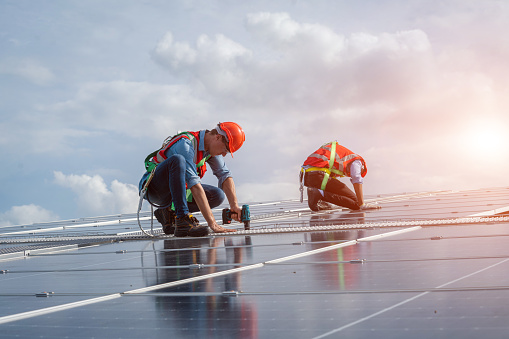The Basics of Solar Panel Installation

The solar panel installation process begins with obtaining all the necessary permits and approvals. Once this step is complete, the solar contractors can get on to installing the panels. They will begin by putting down the mounting hardware and flashings, and then wire up the solar panels.
Once the Solar installation is completed, a representative from your local government will inspect the system to make sure it meets electrical codes and setback requirements. This inspection is a great way to ensure that the solar panel installation will be safe and efficient for years to come.
Safety comes first in all solar projects. This means that safety gear and a safety manual should be used at all times, even when working on the roof. Otherwise, accidents could happen and you could become injured.
During the Solar Panel Installation process, you will be lifting and handling heavy items and moving around electricity cables. The installation will also be exposed to the elements, so you should wear a dust mask and be careful not to breathe in concrete fumes.
Before you begin the solar panel installation, be sure to consult a professional solar company to make sure that you are getting the best deal on a solar system. This can help you reduce the risk of any damage to your home or the system, and save you money in the long run.
Next, you will need to build a platform for the panels. This platform should be built with the length and width of the panels in mind. It should be constructed using metal or aluminum rails, and it should be solid enough to withstand any weather conditions.
You will also need to install a charge controller, which is located near the main panel and can be either indoors or outdoors. This is a very important component of your solar system, as it will convert the absorbed energy into AC electricity that you can use in your house.
Once the charge controller is installed, it will be connected to your home's wiring and your solar panel system. Depending on the type of system you have, this may be done by a circuit breaker or fuse.
The circuit breaker is used to protect the charge controller from overvoltage, which can cause damage to the unit. It will also prevent the panel from overheating and causing damage to other components in the system.
Inverters are also vital components of the system, as they transform the absorbed energy from the solar panels into AC electricity that can be used in your home. These inverters can be located in the attic or on the rooftop, and they usually come with a general meter that allows you to monitor the output of your solar panels.
Lastly, the inverter must be connected to the consumer unit, which will convert the energy from the solar panels into a usable form of power. This can be a simple connection to the existing wiring, but it is a good idea to have a professional handle this part of the installation. Know more about solar at https://en.wikipedia.org/wiki/Solar_panel.
